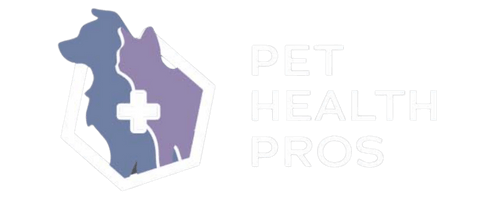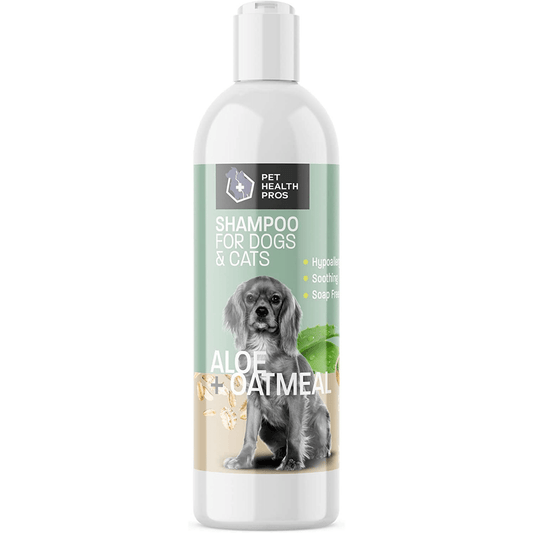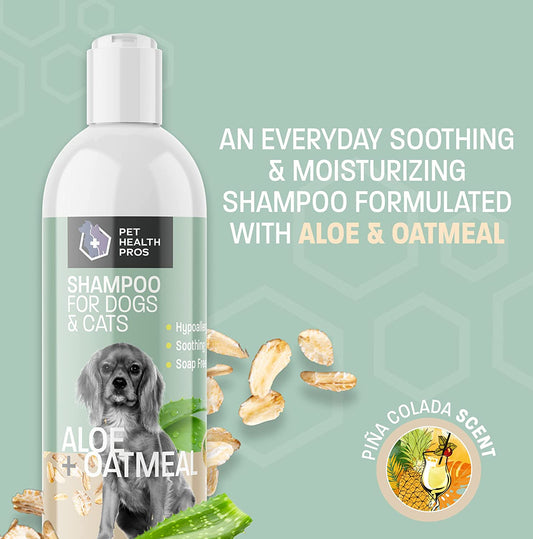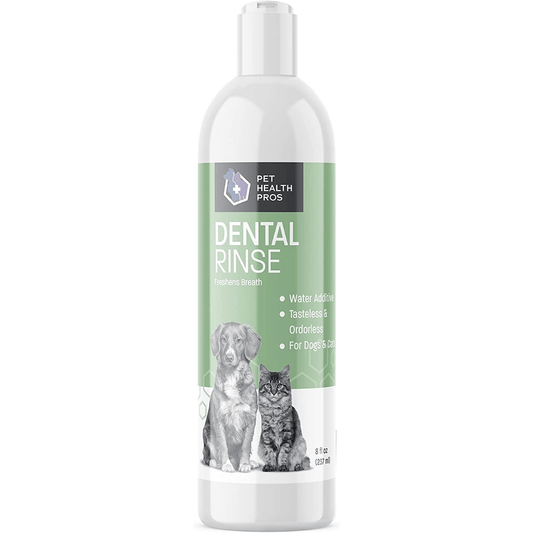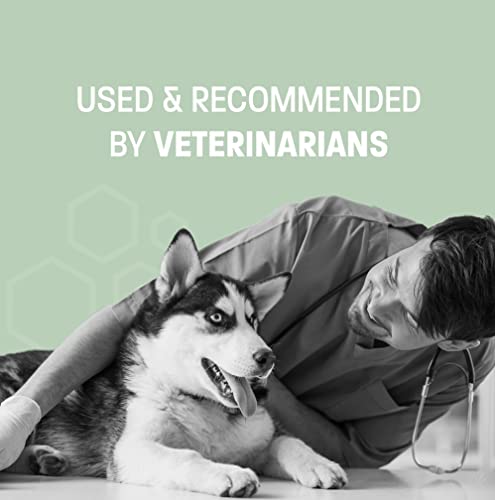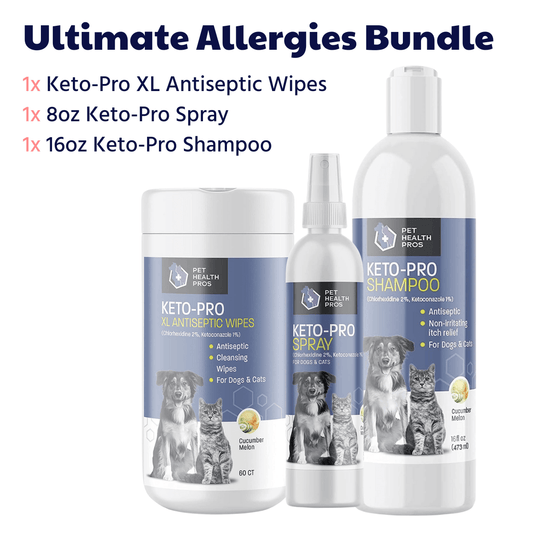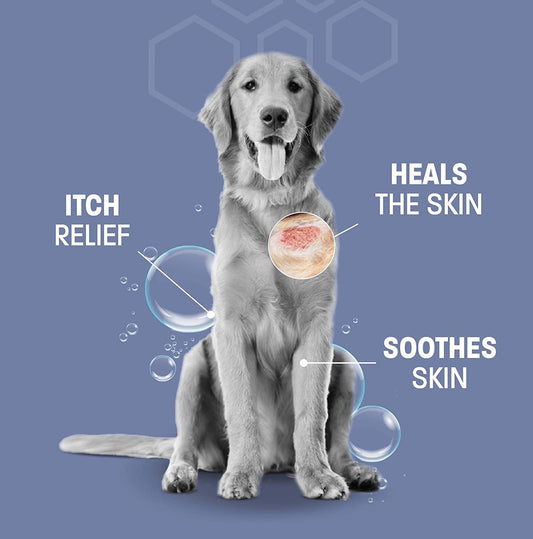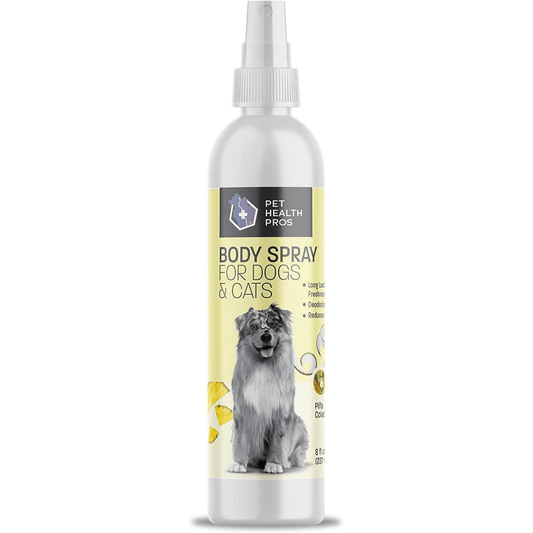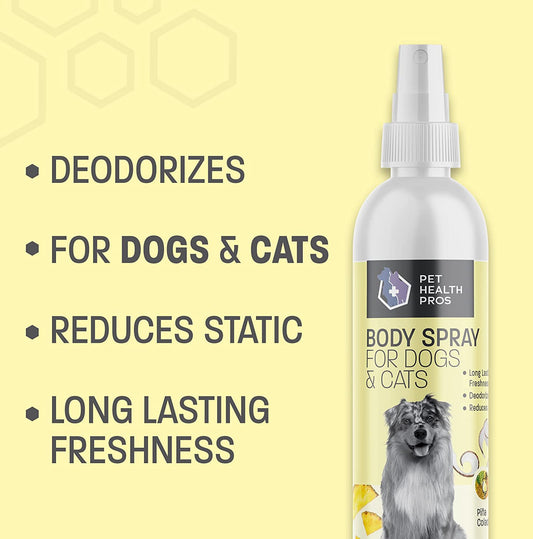When our beloved pets encounter injuries, it's crucial for pet owners to know how to respond effectively. This article, 'First Aid for Furry Friends: How to Respond to a Pet Injury,' aims to guide pet owners through the initial steps of assessing and treating common pet injuries, creating a comprehensive first aid kit using Pet Health Pros products, understanding when to seek professional care, and preventing future injuries. Pet Health Pros, a U.S.-based company with a rich foundation in veterinary medicine, offers a wealth of knowledge and superior pet health supplies to ensure the well-being of your pet companions.
Key Takeaways
- Understanding the correct first aid response can be life-saving for pets; staying calm and learning to assess and secure an injured pet is essential.
- Common pet injuries such as cuts, sprains, and burns require specific first aid techniques; knowing these can prevent further harm and promote healing.
- A well-stocked pet first aid kit with Pet Health Pros products is a must-have for all pet owners, ensuring you're prepared for any injuries that may occur.
- Recognizing the signs of serious injury and seeking timely veterinary care are critical steps in ensuring the long-term health and safety of your pet.
- Preventative measures and a safe environment are key to minimizing the risk of pet injuries, and Pet Health Pros offers resources to support pet owners in these efforts.
Assessing the Situation: Initial Steps to Take When Your Pet is Injured
Stay Calm and Approach with Care
When your pet is injured, your first reaction is crucial. Stay calm and speak to your pet in a gentle, reassuring tone. Animals can sense anxiety, which may exacerbate their stress. Approach your pet slowly, avoiding sudden movements that could startle them.
Assess the situation from a safe distance before getting closer. Look for signs of pain or distress, such as whimpering, growling, or an attempt to hide. If your pet appears aggressive or fearful, it may be best to seek professional help immediately.
- Ensure your own safety first; use protective gloves if necessary.
- Gently restrain your pet to prevent further injury.
- Speak soothingly to maintain a calm environment.
Remember, a calm and measured approach not only helps to keep your pet's stress levels down but also ensures your safety and the effectiveness of your first aid efforts.
By maintaining composure and using a careful approach, you can more effectively manage your pet's injury and prepare them for the necessary treatment.
Assessing the Severity of the Injury
Once you've managed to stay calm and approach your pet with care, the next critical step is to assess the severity of the injury. Look for signs of bleeding, swelling, or lameness, as these can indicate the urgency of the situation. It's important to determine whether the injury is superficial or if there's a possibility of deeper trauma or internal issues.
Symptoms such as excessive panting, whining, or an inability to stand can suggest that the injury is severe and requires immediate attention. In such cases, it's crucial to minimize your pet's movement to prevent further harm.
When in doubt, always err on the side of caution and consult a veterinarian as soon as possible.
Here's a quick checklist to help you evaluate the injury:
- Check for visible wounds or bleeding.
- Gently palpate around the injury for signs of pain or discomfort.
- Observe your pet's behavior and note any changes or distress.
- Consider the context of the injury, such as a fall or a fight with another animal.
Remember, your pet's well-being is paramount, and taking swift, appropriate action can make a significant difference in their recovery.
Securing Your Pet for Treatment
Once you have assessed the severity of your pet's injury, it is crucial to secure them safely before administering any treatment. Ensure your pet is comfortable and restrained to prevent further injury and to allow for effective first aid application. Use a calm voice and gentle touch to soothe your pet during this process.
Restraint is not about restricting your pet's movement entirely, but rather about preventing them from making sudden movements that could exacerbate their injury. Depending on the size and temperament of your pet, you may need assistance from another person.
When securing your pet, always prioritize their comfort and safety. Use soft materials like blankets or towels to provide support and to prevent additional stress.
Here are some steps to secure your pet:
- Place your pet on a flat, stable surface.
- If necessary, use a muzzle to prevent biting, but only if your pet is not vomiting or having difficulty breathing.
- Wrap your pet in a blanket to create a comforting 'burrito' effect, which can help to keep them still.
- For larger pets, use a stretcher or board to transport them if the injury is severe and they need to be moved.
Remember, the goal is to create a safe environment for both you and your pet during treatment. After securing your pet, you can proceed with the appropriate first aid measures.
Common Pet Injuries and First Aid Responses
Cuts and Scrapes: Cleaning and Bandaging
When your pet suffers a cut or scrape, prompt and proper care is crucial to prevent infection and ensure a speedy recovery. First, gently clean the wound with mild soap and warm water, removing any debris. After cleaning, pat the area dry with a clean cloth.
Apply a pet-safe antiseptic to the wound to disinfect it. If the injury is minor, a simple bandage may suffice to protect it. For more significant wounds, you may need to apply a sterile gauze pad and secure it with adhesive tape specifically designed for pets, which doesn't stick to fur.
It's important to monitor the injury for signs of infection, such as redness, swelling, or discharge. If any of these symptoms appear, consult your veterinarian immediately.
Remember to keep the bandaged area clean and dry, changing the dressing regularly. If your pet is prone to licking or biting at the wound, consider using an Elizabethan collar to prevent them from disturbing the healing process.
Sprains and Fractures: Immobilization Techniques
When dealing with sprains and fractures in pets, immobilization is crucial to prevent further injury and to facilitate healing. The first step is to gently restrain your pet to ensure both your safety and theirs. Use a calm voice and avoid sudden movements to keep your pet as relaxed as possible.
Immobilization techniques vary depending on the location and severity of the injury. For a limb injury, you can use a makeshift splint with items from your first aid kit. Ensure the splint is not too tight, as it could cut off circulation. Here's a simple guide to creating a splint:
- Find a rigid item to use as a splint, such as a magazine or a piece of cardboard.
- Place a soft layer, like a folded towel, between the splint and the limb.
- Secure the splint with bandages, making sure to wrap both above and below the injury site.
Remember, immobilization is a temporary measure. Always seek veterinary care for a proper diagnosis and treatment plan.
If your pet is in too much pain or if the injury seems severe, do not attempt to immobilize the limb yourself. Transport your pet to a veterinarian as soon as possible. While immobilization can aid in recovery, it is not a substitute for professional medical attention.
Burns and Heatstroke: Immediate Cooling Measures
When a pet suffers from burns or heatstroke, immediate action is crucial to prevent further injury and facilitate recovery. Begin by moving the pet to a shaded or cooler area to reduce body temperature. For burns, gently apply cool water or a cold compress to the affected area, taking care not to cause additional pain or damage to the skin.
For heatstroke, it is vital to lower the pet's body temperature gradually. Offer small amounts of cool water to drink if the pet is conscious and able to swallow. Never use ice or extremely cold water, as this can lead to shock. Instead, use lukewarm water and wet towels to cool the pet's body, focusing on the head, neck, and areas with less fur.
Remember, while immediate cooling measures are important, they are not a substitute for professional veterinary care. Burns and heatstroke can have serious complications, so it is essential to seek veterinary attention as soon as possible.
Leaving dogs in hot cars poses life-threatening risks like heatstroke and organ failure. Tips include never leaving them alone, finding alternatives, and educating others to ensure pet safety.
Creating a Pet First Aid Kit with Pet Health Pros Products
Essential Items for Your Kit
Creating a comprehensive first aid kit is crucial for any pet owner. Ensure you have the basics: gauze, non-stick bandages, adhesive tape, and cotton balls. These items are fundamental for addressing minor injuries such as cuts or scrapes. Additionally, include a digital thermometer to check your pet's temperature, as fever can be a sign of infection.
For more specific needs, consider adding a pair of tweezers for tick removal, a syringe or eyedropper for administering medications, and saline solution for flushing wounds. Scissors with a blunt end are also essential for cutting bandages or fur if necessary. Remember to include a pet-safe antiseptic and a pair of latex-free gloves to maintain hygiene during treatment.
It's important to tailor your first aid kit to your pet's specific health requirements. If your pet has a chronic condition or is prone to certain ailments, consult with your veterinarian to include appropriate medications or tools.
Lastly, keep a detailed booklet with instructions on how to use each item in your kit, as well as the contact information for your veterinarian and the nearest emergency animal hospital. Regularly check the expiration dates of all items and replace them as needed to ensure your kit is always ready in case of an emergency.
How to Use Pet Health Pros Supplies
Understanding how to properly use the supplies in your pet first aid kit is crucial for effectively administering care. Pet Health Pros provides not only high-quality health products but also guidance on their correct application. For instance, when dealing with a cut or scrape, clean the wound with saline solution before applying an antibiotic ointment and covering it with a sterile bandage.
Bandages, splints, and gauze are essential for immobilizing a suspected sprain or fracture. Follow the instructions carefully to avoid further injury. Here's a simple list to help you remember the steps:
- Clean the injury with saline solution or clean water.
- Apply antibiotic ointment to prevent infection.
- Cover the wound with a sterile bandage or gauze.
- Immobilize the affected area with a splint or bandage if necessary.
In every situation, your priority is to ensure the safety and comfort of your pet while preventing further harm. Always monitor your pet's response to the first aid treatment and be prepared to adjust as needed.
Remember, the Pet Health Pros website offers pet health products and tips, including detailed instructions for first aid scenarios. It's important to stay calm and approach your pet with care, as a stressed animal can react unpredictably. For serious injuries, it's imperative to seek veterinary help immediately.
Maintaining and Restocking Your First Aid Kit
A well-maintained first aid kit is essential for the prompt and effective treatment of pet injuries. Regularly check the expiration dates of all items and replace any that are outdated. It's also important to replenish supplies immediately after use to ensure you're always prepared for the next emergency.
Inventory management is key to maintaining your first aid kit. Here's a simple checklist to help you keep track:
- Sterile gauze pads and rolls
- Adhesive tape
- Scissors and tweezers
- Antiseptic wipes or solution
- Disposable gloves
- Saline solution
- A digital thermometer
Remember, while home remedies for pets can be convenient and beneficial, consulting a veterinarian is crucial. Supplementing professional care with natural therapies can promote pet health.
Ensure that your kit includes products from Pet Health Pros, which are crafted in collaboration with veterinarians and made with locally sourced, top-grade ingredients. By doing so, you not only support your pet's health but also contribute to a brand that is community-focused and dedicated to the well-being of pets.
When to Seek Professional Veterinary Care
Recognizing Signs of Serious Injury
When your pet is injured, it's crucial to recognize the signs of a serious injury promptly to ensure they receive the necessary care. Some injuries may appear minor but can lead to complications if not treated properly. Here are key indicators that your pet may need immediate veterinary attention:
- Uncontrolled bleeding
- Signs of extreme pain, such as whining, shaking, or withdrawal
- Difficulty breathing or rapid breathing
- Obvious fracture or limb at an unnatural angle
- Inability to stand or walk
- Loss of consciousness
- Seizures
If you observe any of these symptoms, it's essential to seek professional veterinary care as soon as possible. Early detection and intervention can be critical for your pet's recovery and long-term health.
Remember, not all serious conditions are immediately visible. Internal injuries, for example, may not show external signs but can be life-threatening. Always err on the side of caution and consult with a veterinarian if you're unsure about the severity of your pet's injury.
The Importance of Timely Veterinary Intervention
When your pet is injured, timely veterinary intervention can be the difference between a quick recovery and long-term complications. It's crucial to recognize when an injury is beyond the scope of home first aid and requires professional attention. Some injuries, such as deep cuts, suspected fractures, or ingestion of toxic substances, should be addressed by a veterinarian as soon as possible.
Immediate veterinary care ensures that your pet receives the necessary diagnostics, such as X-rays or blood tests, and the appropriate treatment without delay. This can prevent the injury from worsening and help to avoid additional stress for both you and your pet.
- Recognize signs of distress or severe pain
- Look for symptoms like excessive bleeding, limping, or labored breathing
- Consider the pet's behavior; if they are unusually quiet or aggressive, it may indicate a serious issue
Delaying veterinary care can result in more severe health issues and even life-threatening situations. Always err on the side of caution and consult with a professional if you're unsure about the severity of your pet's injury.
Remember, Pet Health Pros is committed to supporting pet owners through every step of their pet's health journey, including providing educational resources to help you make informed decisions about when to seek veterinary care.
How Pet Health Pros Can Support Ongoing Treatment
After initial treatment, ongoing care is crucial for your pet's recovery. Pet Health Pros is committed to supporting pet owners through this journey with their comprehensive range of products. With a focus on quality and affordability, their supplies are designed to meet the continued treatment needs of your furry friend.
- Expertly Crafted Solutions: Products developed in collaboration with veterinarians ensure that your pet receives professional-grade care at home.
- Customer-Centric Services: Pet Health Pros prioritizes your pet's well-being, offering personalized support for any inquiries or concerns.
- Educational Resources: Access to informative articles and guides helps pet owners understand and manage their pet's health effectively.
By investing in the right tools and resources, you can provide your pet with the best possible care during their recovery. Pet Health Pros stands by its brand promise to enhance the lives of pets and reassure their owners.
Remember, a regular grooming routine is part of maintaining your pet's health. Invest in quality grooming tools and start grooming pets early with positive reinforcement. For more complex needs, consider professional services to avoid common mistakes. Pet Health Pros can assist in maintaining a regular grooming routine for your pet's health and happiness.
Preventing Future Injuries: Tips and Best Practices
Regular Health Checks and Preventative Measures
Regular health checks are a cornerstone of preventative care for your pet. By scheduling routine veterinary visits, you can ensure that your pet is up-to-date on vaccinations and that any potential health issues are identified early. Early detection of problems can significantly improve the outcome for your pet.
Preventative measures also include a range of practices that contribute to your pet's overall well-being. These practices encompass everything from nutrition to exercise, grooming, and training. A comprehensive guide for pet owners should cover aspects such as travel prep, home safety, allergies, insurance, expenses, and home setup to be prepared and provide the best care for your pet.
It's essential to create a lifestyle for your pet that promotes health and happiness. This includes regular grooming, adequate exercise, and a balanced diet. By being proactive about your pet's health, you can prevent many common issues and ensure a longer, healthier life for your furry friend.
Here is a simple checklist to help you stay on top of your pet's health needs:
- Annual veterinary check-ups
- Up-to-date vaccinations
- Monthly parasite prevention
- Dental care routine
- Balanced diet and weight management
- Regular exercise and mental stimulation
- Grooming and skin care
- Safe and comfortable living environment
Creating a Safe Environment for Your Pet
Ensuring the safety of your pet at home is crucial to preventing injuries. Regularly inspect your living space for potential hazards such as exposed wires, sharp objects, or small items that could be ingested. It's important to tailor your pet-proofing efforts to the specific needs and behaviors of your pet.
Toxic plants, household chemicals, and human medications should be kept out of reach. Pets are naturally curious, and these substances can be harmful if consumed. Consider using childproof latches on cabinets and ensuring trash cans have secure lids.
Create designated safe zones for your pet where they can retreat and feel secure. These areas should be free of hazards and include comfortable bedding, fresh water, and their favorite toys.
Here are some additional tips to create a safe environment for your pet:
- Use pet gates to restrict access to dangerous areas.
- Ensure windows have secure screens to prevent falls.
- Avoid small, chewable decorations that can pose a choking hazard.
- Keep electrical cords bundled and out of sight to discourage chewing.
By taking these precautions, you can minimize the risk of injury and provide a safer, happier home for your furry friend.
Educational Resources from Pet Health Pros
At Pet Health Pros, we believe that informed pet owners are empowered to provide the best care for their furry friends. Knowledge is a cornerstone of pet safety and well-being. Our commitment to education is reflected in the resources we offer to help you prevent injuries and maintain your pet's health.
Educational content is a significant part of our brand's promise. We provide a variety of materials, including blog posts, articles, and step-by-step guides, all designed to enhance your understanding of pet health. These resources cover a wide range of topics, from encouraging pet exercise for health and happiness to tailoring activities for older pets.
To further support your pet's health journey, we've compiled a list of top pet health products available on our Amazon storefront. This allows for convenient shopping and access to customer reviews and fast shipping options.
Remember to consult with your vet for a personalized exercise regimen, especially if your pet has specific health needs. Indoor cats, for example, greatly benefit from interactive play, while swimming safety can vary depending on the breed and health of your dog. Explore our products and educational materials to ensure you're equipped with the knowledge and tools to keep your pet healthy and happy.
To ensure you stay active and injury-free, it's crucial to adopt preventive measures and follow best practices. Our comprehensive guide on 'Preventing Future Injuries' offers valuable tips that can help you maintain your health and well-being. For more detailed insights and personalized advice, visit our website and explore a wealth of resources designed to keep you moving safely. Don't let preventable injuries hold you back—take action today!
Conclusion: Ensuring the Best Care for Your Pet
In the face of a pet injury, timely and informed action can make all the difference. By equipping yourself with the knowledge and supplies necessary for pet first aid, you become a crucial part of your pet's well-being. Remember, the safety and health of your furry friends are paramount, and understanding how to respond to their injuries is a testament to your dedication as a pet owner. Pet Health Pros is committed to supporting you in this journey with our superior, affordable pet health supplies, crafted in collaboration with veterinarians. We encourage you to explore our educational content, utilize our customer-centric services, and take comfort in our brand promise to enhance the lives of pets and reassure their owners. Together, we can ensure healthier pets and happier lives.
Frequently Asked Questions
How do I approach my pet if they are injured?
Stay calm and approach your pet gently to avoid startling them. Speak in a soothing voice and move slowly to prevent further distress.
What should be included in a pet first aid kit?
A pet first aid kit should include items like gauze, non-stick bandages, adhesive tape, scissors, tweezers, antiseptic wipes, a digital thermometer, and a pet emergency contact card.
How can I tell if my pet's injury is serious?
Signs of a serious injury include excessive bleeding, apparent broken bones, difficulty breathing, and loss of consciousness. If you notice any of these signs, seek veterinary care immediately.
Can I use human medication on my pet?
No, you should not use human medication on your pet unless specifically instructed by a veterinarian, as some human medications can be toxic to animals.
How often should I check and restock my pet's first aid kit?
Check your pet's first aid kit every few months for expired items and restock as necessary. Always replenish items immediately after they've been used.
What should I do if my pet experiences a burn or heatstroke?
For burns, apply cool water to the affected area and cover it with a damp cloth. In case of heatstroke, move your pet to a cooler environment and offer small amounts of water. Contact a veterinarian as soon as possible.
